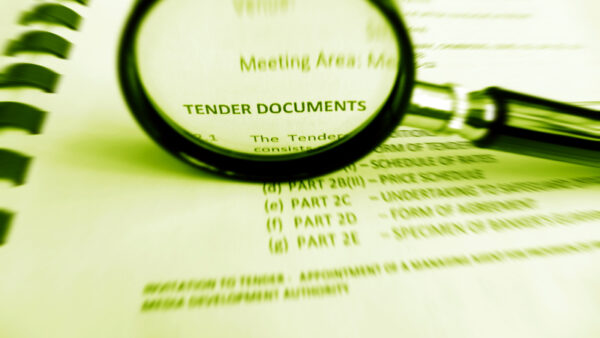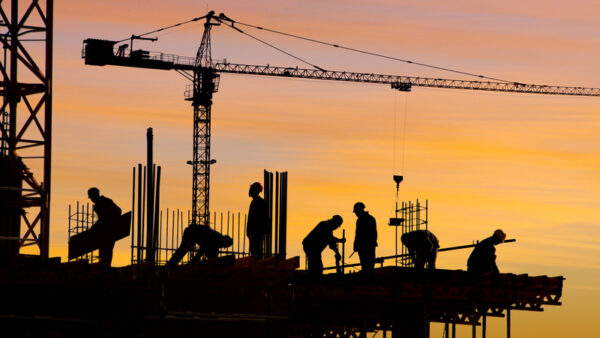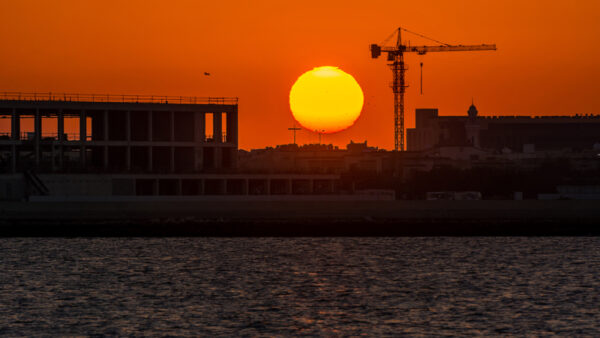Egypt’s New Administrative Capital is being built from scratch in the desert 45km east of Cairo. Covering 700 square kilometres in total, the city is intended to house 34 ministries of Egypt’s legendarily sprawling government, and be a new business, finance and cultural hub, with residential districts accommodating 7 million people.
It is an extraordinary initiative, but not a new one. Successive regimes since the 1970s have been obsessed by the most salient geographical fact of Egypt, which is that almost every soul who lives there does so on around 4% of its territory, either in the Delta or along the narrow strip of the Nile Valley.
We have a dream, and we’re building our dreams now– Administrative Capital for Urban Development spokesperson
This geographical fact collides with an equally salient demographic one, namely, Egypt’s high fertility rate, which increases the population by more than two million every year.
That’s why rulers since Nasser have gazed out over the vast, scorched hinterland and dreamt of escape. At huge cost, governments have built dozens of new cities and towns there, but none have worked in terms of becoming economically self-sustaining alternative population centres.
That Egypt is trying again with an even bigger and glitzier scheme can be explained by the meeting of these old preoccupations with the Arab Spring in 2011, which forged an urgent bond between Egypt’s military establishment and the Gulf states, particularly Saudi Arabia and the United Arab Emirates.
Shaken by the 25 January revolution in 2011, but precariously back in power two and a half years later, Egypt’s generals looked to their Gulf backers for cash and ideas to enthuse a traumatised population and restore an aura of legitimacy.
The result was a reworked narrative of desert settlement, spun afresh with a Gulf faith in the power of global capital to seed high-tech business worlds in the sand, leap-frogging clean over stubborn old social, economic and geographic constraints.
Will it work this time? The signs are not good.
Past mistakes
To understand the future prospects of the new capital, it is worth reviewing Egypt’s previous attempts at desert settlement, and why they failed.
A good guide is provided by the Cairo-based American economist and urban planner, David Sims, whose book on the topic (Egypt’s Desert Dreams: Development or Disaster?) appeared with eerie timeliness in the same month President Abdel Fattah el-Sisi unveiled the new capital at a stage-managed investors conference at Sharm el Sheikh in March 2015.
Sims’ forensic study examined around 20 new desert cities launched from the time of Anwar Sadat in 1976, including bold early experiments such as Tenth of Ramadan, Sadat City, Sixth of October, Fifteenth of May, and others, which were intended to have a combined population of more than 20 million.
They were meant to be entirely new centres of growth, self-funding and economically independent of existing urban centres.
By 2014, however, these cities had a combined population of less than one million.
They failed, said Sims, because they did not cater for ordinary Egyptians, some 28% of who live below the poverty line.
In Sims’ view, these cities fulfilled only central planners’ notions about what an ideal Egypt should look like – most often a version of suburban America.
You’d need a car to get around in them, whereas only 9% of families in urban Egypt own any type of vehicle.
House sizes specified by planners were too big and therefore too expensive for most people.
Nor was employment catered for. Although government managed to entice or compel large industrial concerns to set up in some new cities, planners restricted the space available for informal and smaller-scale commerce – workshops, repair shops, kiosks, stalls and other small businesses of the sort that provide 45% of all employment in Egypt.
Sims’ anger boiled over at planners who show an “almost imperial ignorance of how the common Egyptian family struggles to make a living”.
“State planners and their design consultants have produced … such sterile, expensive, and inappropriate designs that they only fit the aspirations of the car-owning middle classes and the rich,” he said.
Furthermore, they were conceived primarily as speculative real estate schemes. Inevitably, the rich and well connected snapped up heavily discounted government land in the hope of selling for a profit later, leading to speculative bubbles, ghost towns and dusty graveyards for vital capital.
Anything different this time?
After the coup on 3 July 2013, Sisi needed cash and a bold development programme, and the Gulf states were happy to help. Alarmed at the election and year-long presidency of the Muslim Brotherhood’s Mohamed Morsi, they funnelled billions of dollars into Egypt to support the restored military regime, and they sponsored the New Administrative Capital initiative.
The master developer was to be Dubai property mogul Mohamed Alabbar, founder of Emaar Properties, developer of the Burj Khalifa and economic advisor to Dubai’s ruler, Sheikh Mohammed bin Rashid Al Maktoum. His investment vehicle Capital City Partners would work with Egypt’s housing ministry to get the new capital built.
Official statements were suffused with the faith in the power of global capital, working in tandem with new technology, to create a clean, futuristic business Xanadu.
A miniature model of the new city, part of a master plan hastily produced by US architect Skidmore, Owings & Merrill (SOM), showed a central business district bristling with towers, and a seven-minute animated fly-through depicted a pixel-perfect world of vast, modern conference halls, an opera house, pristine eight-lane boulevards, swaths of forested parkland, waterways, and various clusters with labels such as “Smart Village”, “Medical City”, “Knowledge City”, and the like. Â
Soon, though, international investors’s confidence in the viability of the scheme evaporated. The developers who were to put up their own cash bickered over terms and then walked away, leaving the Egyptian government to borrow billions of dollars from China to force its vision through.
In October 2017, China State Construction Engineering Corp (CSCEC) signed a $3bn contract to build 20 towers in the central business district, funded mostly by Chinese bank loans.
Egypt also borrowed $1.2bn from China to build a 68km electrified railway from the new city to the outskirts of Cairo.
Sisi’s original vision had not been for loans, however. Government debt is already high, and climbing. He wanted equity finance from investors confident of generating profits with new enterprises, both for themselves and the Egyptian state.
The government has said that land sales in the new capital are brisk, but the buyers are mostly Egyptian property developers planning upmarket residences, as they had in previous desert city schemes.
As recently as October 2017, the question of affordable housing in the new capital seemed only to irritate the army-controlled agency in charge of developing it – ACUD, an acronym for the Administrative Capital for Urban Development.
Asked by a Guardian journalist about the quantity of affordable homes, ACUD’s spokesman snapped: “Forget the numbers, they’re not important and not fixed. We have a dream, and we’re building our dreams now.”Â
If Sisi does manage to make the sprawling apparatus of the Egyptian government move there, a sterile bureaupolis could take enforced root in the sand. Its proximity to Cairo might make it a commuter enclave for rich Cairenes. But if there is nowhere pleasant and affordable for the clerks, cooks and cleaners to live and raise their families, the city will decant every evening and weekend.
- A longer, fully referenced version of this article is published in the current edition of Construction Research & Innovation, and can be accessed free of charge by GCR readers by clicking here, until 24 June 2019.
Comments
Comments are closed.







Why the negative rhetoric? Developing countries need to rebuild and expand, why is it OK for countries in the west or other regions be praised, though there is always negative wording and biased views. Their GDP is at 5.5% and growing.
Can you perhaps be more positive and supportive, rather than be negative? Especially if your site is about construction, which should endorse all forms of construction from any country. Thanks and I do like your site, but just don’t like negativity.